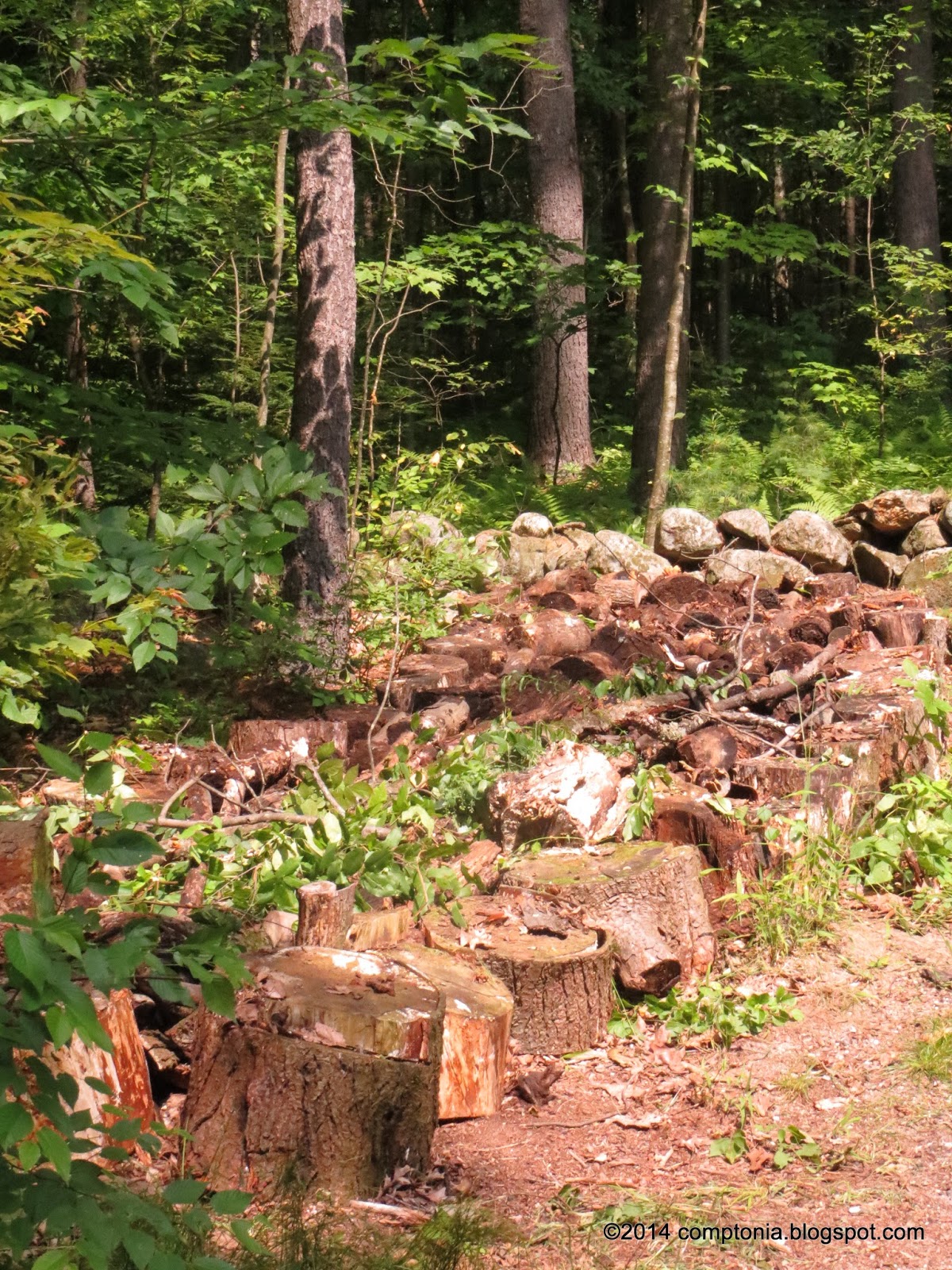The first (affordable) cherries of 2014.
Mmmmmmmmm.
~~~
In other news of long-awaited pleasures, a project I've been trying to begin for the past year is suddenly underway! It's a new little garden area:
The Very Raised Bed.
This is something I knew I could not do alone, not even on a good day. (I wonder when it will become easier to say that?) So, when friends with a farm in town said one of their teenage helpers was looking for more hourly work, this garden bed seemed the perfect "test project" to tackle.
There's a little spot at the top of my driveway that - unlike 99% of my property - actually gets quite a lot of sun. It's just a scrubby little rock-strewn sloping pocket of sunlight, maybe 30 feet deep and 90 feet long. My plan is to build a very high raised bed in this spot, without modifying the ground at all (which would require a backhoe). Just starting at ground level, slope and all, and building right over the rocks.
This is an example of the kind of rock I'm talking about:
The last time it moved any significant distance, it was bring propelled by a glacier.
A great deal of wood will be incorporated into the Very Raised Bed: chunks of storm-damaged trees, or sections of trees that were cut down but which I could not split into stovewood, branches that have fallen or been pruned, saplings the goats have girdled, and so on. Coarse woody debris (CWD) is what forestry folk call this material, and it is important stuff in forest ecosystem function. There is so much coarse woody debris on my property, I feel very comfortable channeling some of it directly into garden substrate. Long-term compost, so to speak; first giving structure to a high raised bed, and as it very gradually decomposes, generating warmth, retaining moisture, and making nutrients available to plants.
Gardening with wood is not a new idea at all - in fact, it seems to be quite trendy and google-able under the uselessly uninformative term "hugelkultur" - and I've done it before, but never on such a large scale. This bed will be about 22 feet long and about 5 feet high along a central ridge, sloping down on both sides. Ultimately, there may be room in this sunny spot for two or three such beds, which is why I decided to align this one roughly east to west on the east-rising slope, instead of going cross-slope, which may have been a safer choice, erosion-wise. Time will tell, and we shall see! My present goal is to get this southernmost bed constructed completely before deciding whether to add others. When it comes to labor-intensive experiments, I prefer to work out possible problems and improvements on a prototype. This method has worked out well for other things. Remember the little floored goat bungalows from last Autumn?
~~~
On Wednesday afternoon, my new helper showed up on time and ready to work. I marked out the border of the first bed, explained the entire idea, pointed out the sources of heavier materials for the border, and we were off and running. Well, not quite "running," as it turned into a hot and muggy day. But steadily chugging along for three good hours.
For scale, the opening on the right is where I park the Little Green Sportswagon. And for a reference point, in the middle of the above snap, do you see that horizontal stack of little bits of scrap lumber, surrounded by what looks like a round shrub? That lumber (which will end up inside the new bed) is temporarily piled on a maple stump, just outside the northwest corner of the bed. That leafy globe is all stump sprouts; maples are masters at stump-sprout regeneration. Those sprouts will also end up inside the bed. The stump will remain. I like to think it will become a seat where I can rest after picking pounds and pounds and pounds of vegetables from this garden next year.
The picture below was taken less than an hour into the job, and from another angle - those stump sprouts are now on the left. My unrecognizable (and therefore bloggable) helper is lining up chunks of timber along the northern edge of the bed. You can see the southern edge, already complete. We checked periodically with a 5-foot stake to keep the bed a fairly even width for its entire, pleasantly curved, length.
Three hours and a couple of gallons of water later,
we had the base of the Very Raised Bed:
we had the base of the Very Raised Bed:
The outline is complete, and an initial layer of woody material is in place. Much more will be added in various sizes ranging from small trunks to twigs. Along with the coarse woody debris will be many (many, many) trugs of slightly-used hay from the goat barn, bedding from the Poultry Palace, pulled weeds and the like, eventually topped off with a layer of soil. Even a thin layer of soil will be much harder to come up with than all the other materials combined.
I know it may not look like much in these pictures, but I wanted to share a glimpse of the very beginning of the process. It is a first step, and exactly what I have been envisioning every day for a year. I will take more pictures next week, when my helper is scheduled to return. He made a very good first impression, and I'm hoping to have him here for at least a half-day each week through August. Many small but useful projects have been hanging fire for lack of physical strength or a second pair of hands. Making progress will be very satisfying!
~~~
And while I've been typing this post, I have eaten all the cherries.
Also very satisfying.
~~~~~





